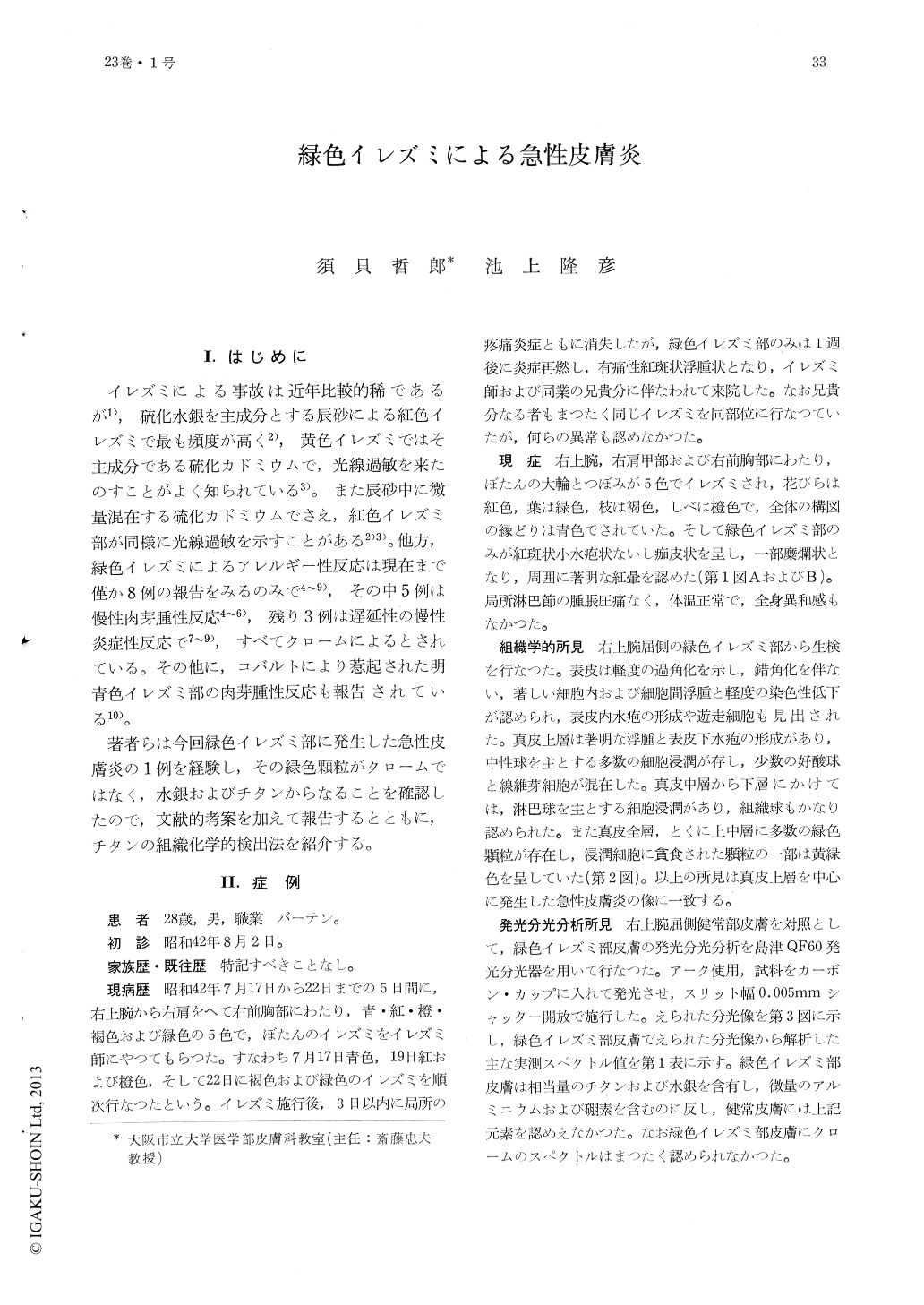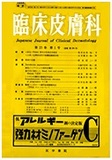Japanese
English
- 有料閲覧
- Abstract 文献概要
- 1ページ目 Look Inside
I.はじめに
イレズミによる事故は近年比較的稀であるが1),硫化水銀を主成分とする辰砂による紅色イレズミで最も頻度が高く2),黄色イレズミではそ主成分である硫化カドミウムで,光線過敏を来たすことがよく知られている3)。また辰砂中に微量混在する硫化カドミウムでさえ,紅色イレズミ部が同様に光線過敏を示すことがある2)3)。他方,緑色イレズミによるアレルギー性反応は現在まで僅か8例の報告をみるのみで4〜9),その中5例は慢性肉芽腫性反応4〜6),残り3例は遅延性の慢性炎症性反応で7〜9),すべてクロームによるとされている。その他に,コバルトにより惹起された明青色イレズミ部の肉芽腫性反応も報告されている10)。
著者らは今回緑色顆イレズミ部に発生した急性皮膚炎の1例を経験し,その緑色顆粒がクロームではなく,水銀およびチタンからなることを確認したので,文献的考案を加えて報告するとともに,チタンの組織化学的検出法を紹介する。
A case of acute dermatitis in green tattoos was reported in a 28-year-old Korean man. He was tattooed on the right half of ventral chest, shoulder and arm with black, red, orange, brown and green dyes of unknown composition. All tattoos were said to be followed at once by edma and inflammation, which subsided within three days. At the sites of green tattoos, however, acute painful inflammation occurred again a week later. On his first visit to the hospital, extensive erythematovesiculoedematous lesions, partly crusted or eroded, were seen at the entire green tattoos. Biopsy disclosed a typical pattern of acute dermatitis, and a large number of greenish granules scattered throughout the dermis. Emission spectrophotometric analysis of the lesion showed a significant amount of titanium and mercury, and a trace amount of aluminium and boron, while that of the apparently normal skin showed none of these elements. In addition, histochemical studies revealed that the greenish granules contained mercury and titanium. Staining procudures for mercury were carried out with diphenylthiocarbazide method, dithizone method and p-dimethylaminobenzylidene rhodanine method. A new staining technique for titanium was divised and successfully performed with a mixture of chromotropic acid and ascorbic acid in formate buffer.
No literatures have been found that either mercury or titanium was used in green tattoos.

Copyright © 1969, Igaku-Shoin Ltd. All rights reserved.


